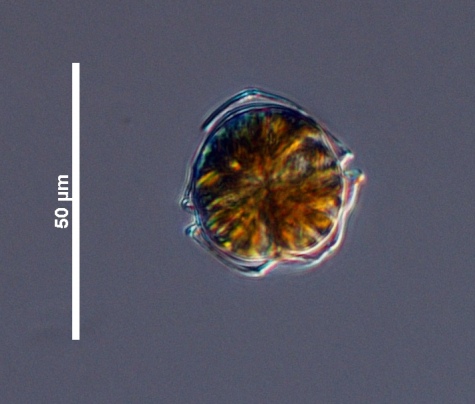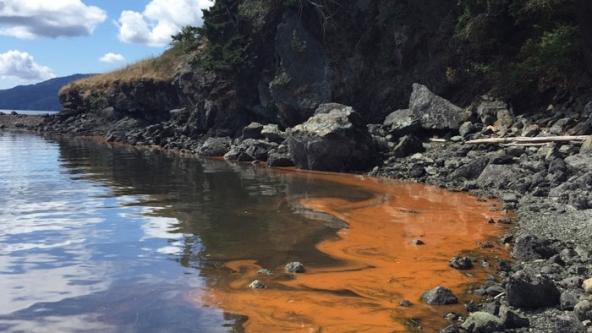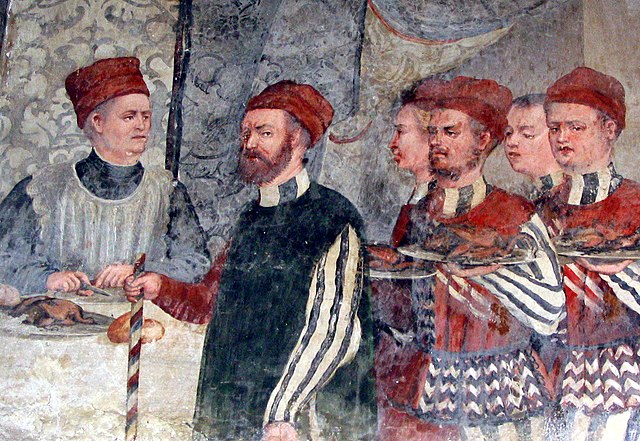
I almost forgot to mention what happened to those mussels we collected on our way to James Island.
Whenever we collect any filter-feeding bivalves from Washington coastal waters (clams, oysters, mussels, etc.), we always check “The Map”. Run by the Washington State Department of Health, the Shellfish Safety Map lists the most recent health advisories for beaches around Washington State including water quality and biotoxins alerts. “The Map” is interactive and very easy to use. I strongly recommend it for anyone who is considering collecting a molluskan dinner from our local waters. In the case of our mussels, we were most concerned about a toxin known as Paralytic Shellfish Poison (or PSP) which as the name suggests, can seriously fuck you up if you’re not careful. As a general rule of thumb, I try to avoid contracting any condition with “paralytic” in its name. Add “poison” to the description, and I’m definitely going to let it pass.
PSP is a naturally occurring biotoxin produced by a microscopic, single-celled algae known as Alexandrium catanella. Measuring less than fifty microns wide, under the right conditions, these little buggers can do massive amounts of damage. Alexandrium produces a neurotoxin that, as you might have guessed, causes muscle paralysis. A type of phytoplankton known as a dinoflagellate, Alexandrium catanella are floating around in the ocean all the time, but under certain conditions, they “bloom”. This means that their numbers increase exponentially and in a few days a handful of cells can grow to fill an entire bay and inlet. As they grow, so does the amount of neurotoxin they produce. Bivalves, like the mussels we harvested, get their meals by filtering algae (and other bits) out of the water. When there’s a bloom, they end up eating a lot of algae and accumulate the neurotoxin, which doesn’t seem to bother the mussels, but is very dangerous to us. For this reason, we call these as harmful algal blooms, or HABs. And so if you happen to be unlucky enough to eat a mussel (or clam or oyster or scallop) after one of these blooms, you can end up with a truly toxic meal, one that could send you to the hospital or even the cemetery.

In September of 2012, a family of seven were vacationing somewhere along the Washington coast when they decided to harvest mussels from the beach by their hotel. If they had checked “The Map”, they would’ve seen a bright red line along the beach where they were staying and probably would’ve decided to stay in and watch The Simpsons. But apparently they didn’t know about “The Map”, or didn’t bother to check, and all seven of them ended up in the emergency room with symptoms ranging from tingling of the lips to vomiting to partial paralysis. The worst affected was a sixty-two year old woman who lost the ability to talk, then fell over and couldn’t stand up. She required intubation, was placed on a ventilator and sent to the ICU. Pretty scary for a nice little weekend at the coast. Thankfully, after a couple days, all seven of them were released from the hospital and seemed to make a full recovery. But not everyone is so lucky.
The first recorded death from PSP in Alaska was in 1799 when members of the Russian American Trading Company ate contaminated blue mussels in Southeast Alaska. The area of the incident is now known as Poison Cove, a great example of geographic names being used for public health. Just this past summer, one poor Alaskan succumbed to PSP. On July 4, 2020, an individual in Dutch Harbor, AK celebrated Independence Day by collecting a number of blue mussels from a local beach. They returned home, cooked everything thoroughly and a few hours later were being airlifted to a hospital in Anchorage. Unfortunately, there was nothing the doctors could do, and within days, they died. You see, the PSP toxin is not like a bacterium or virus – you can’t kill it with heat and cooking the shellfish won’t destroy it. The only thing you can do is avoid it.
Cases of PSP seem to be on the rise in Alaska, and the Alaska Division of Epidemiology estimates a roughly seven-fold increase in PSP events since 1973. The reason for this isn’t entirely clear, but we do know that certain conditions increase the risk of harmful algal blooms. At the top of the list are more nutrients and warmer waters, both of which have increased along with human population growth. More people living around the ocean means more nutrients in the oceans, and that’s more food for algae like Alexandrium. Population growth has also led to more carbon emissions and global warming, which heats the oceans as well as the atmosphere, increasing the likelihood of harmful algal blooms. Unfortunately, humans aren’t the only ones affected by PSP. Recently, a number of Kittlitz’s murrelets died from eating sand lance that were full of the toxin, and in 1978 about seventy common terns and other seabirds died from it.

https://commons.wikimedia.org/w/index.php?curid=63110222
You might be thinking you should never eat shellfish from the beach, and honestly, that’s not a terrible idea. When I was guiding, the official policy was to never gather shellfish as the risk of PSP was just too high. However, there was one guide who apparently thought this was merely a suggestion and chose to treat his clients to fresh oysters, using himself as a pregustator (aka, food taster.) He would cook an oyster, eat it and if it made his lips tingle he wouldn’t feed the rest to his clients. As far as I know, he never fell ill from doing this. He did get a lot of tips, however, though not enough to cover potential medical or legal bills.
Historically, indigenous folk didn’t harvest shellfish during the summer, when long days increase the risk of harmful algal blooms. Instead, they collected shellfish during the darker winter months supplementing salmon and other fish harvested in the warmer months. Today we have agencies like the Washington State Department of Health that conduct regular monitoring of the bivalves we like to eat, and can let us know if the appetizers we’re gathering will send us to the ER.
So what about the mussels we collected?
After arriving at James Island and setting up camp, I was able to use my iPhone to check “The Map”. Sadly, there was a thick red line running all along the southern coast of Lopez Island. Nope. We were not going to eat anything growing there. So even after all that work pulling those damn mussels off the rocks, we tossed them back into the sea, hoping that a local crab or sea star might find them for a nice evening meal.